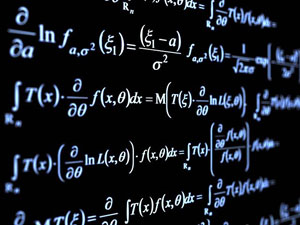The operations of addition, subtraction and multiplication familiar in the algebra of numbers are, with suitable definition, capable of extension to an algebra of vectors. The following definitions are fundamental.
- Two vectors
and
are equal if they have the same magnitude and direction regardless of their initial points.
- A vector having direction opposite to that of vector
but with the same magnitude is denoted by
.
- The sum or resultant of vectors
and
is a vector
formed by placing the initial point of
on the terminal point of
and joining the initial point of
to the terminal point of
. The sum
is written
. The definition here is equivalent to the parallelogram law for vector addition.
- The difference of vectors
and
, represented by
, is that vector
which added to
gives
. Equivalently,
may be defined as
. If
, then
is defined as the null or zero vector and is represented by the symbol
. This has a magnitude of zero but its direction is not defined.
- Multiplication of vector
by a scalar m produces a vector
with magnitude
times the magnitude of
and direction the same as or opposite to that of
according as
is positive or negative. If
,
, the null vector.
Vector algebra

